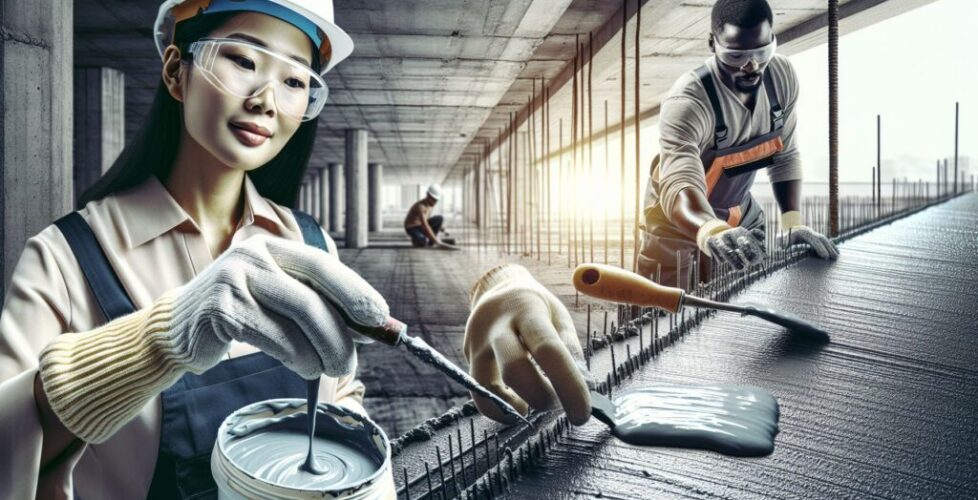Construction Coatings: Enhancing Durability and Aesthetics
When it comes to construction projects, the importance of coatings cannot be overstated. From enhancing durability to providing aesthetic appeal, coatings play a vital role in protecting substrates and ensuring longevity. In this article, we will explore the various types of construction coatings and their benefits, highlighting their significance for coating enthusiasts.
Introduction to Construction Coatings
Construction coatings are protective layers applied to surfaces during the construction or renovation process. These coatings serve multiple purposes, such as preventing corrosion, providing insulation, improving fire resistance, and enhancing the visual appeal of structures. Coatings are available in a wide range of formulations, each designed to meet specific needs and applications.
Types of Construction Coatings
1. Protective Coatings
Protective coatings are used to safeguard substrates from environmental factors such as moisture, chemicals, and UV radiation. These coatings form a barrier that prevents deterioration and extends the lifespan of structures. Examples of protective coatings include anti-corrosion coatings for metal structures, waterproofing coatings for roofs and basements, and UV-resistant coatings for exterior surfaces.
2. Decorative Coatings
Decorative coatings are primarily used for aesthetic purposes, enhancing the visual appeal of surfaces. These coatings come in various colors, patterns, and textures, allowing architects and designers to create unique and visually captivating spaces. Decorative coatings are commonly used on interior walls, facades, and flooring to achieve desired aesthetic effects without compromising on durability.
3. Insulating Coatings
Insulating coatings provide thermal insulation, reducing the transfer of heat through walls, roofs, or other surfaces. By creating a barrier between the internal and external environments, these coatings help maintain comfortable temperatures inside buildings. Insulating coatings are often applied to roofs, walls, and pipelines, significantly reducing energy consumption and improving the overall energy efficiency of structures.
4. Fire-Resistant Coatings
Fire-resistant coatings play a crucial role in enhancing the safety of buildings. These coatings are formulated to withstand extremely high temperatures, delaying the spread of flames. By providing fire resistance to structural components, such as steel beams or wooden frames, they allow occupants to evacuate safely and give firefighters more time to control the blaze. Fire-resistant coatings are commonly used in commercial, industrial, and public buildings.
Benefits of Construction Coatings
1. Increased Durability
One of the primary advantages of construction coatings is their ability to enhance the durability of substrates. By shielding surfaces from environmental factors, such as moisture, chemicals, and UV radiation, coatings prevent corrosion, degradation, and premature wear. This results in longer-lasting structures that require fewer repairs and maintenance.
2. Improved Sustainability
Construction coatings can contribute to the sustainability of buildings by reducing energy consumption and improving their overall performance. Insulating coatings, for example, help maintain stable indoor temperatures, reducing the reliance on heating and cooling systems. Additionally, coatings with low volatile organic compound (VOC) content minimize harmful emissions, promoting better indoor air quality.
3. Enhanced Aesthetics
Apart from their protective properties, coatings are also highly valued for their ability to enhance the aesthetic appeal of structures. Decorative coatings offer endless design possibilities, allowing architects and designers to create visually striking spaces. By choosing coatings with different colors, textures, and finishes, construction enthusiasts can transform mundane surfaces into captivating works of art.
4. Cost Savings
While coatings may require an upfront investment, they can lead to significant cost savings in the long run. By protecting substrates from damage and reducing the need for frequent repairs, coatings help extend the lifespan of structures. Additionally, energy-efficient coatings contribute to lower utility bills by reducing heating and cooling requirements. These cost savings make coatings a wise investment for both residential and commercial construction projects.
Conclusion
Construction coatings are a crucial aspect of modern construction, providing both practical and aesthetic benefits. From protecting surfaces against corrosion to enhancing visual appeal, coatings play a crucial role in ensuring durable and captivating structures. By embracing the use of construction coatings and staying informed about the latest advancements in the industry, coating enthusiasts can contribute to the longevity and quality of construction projects.

